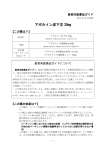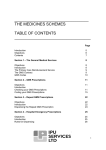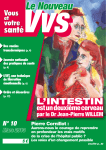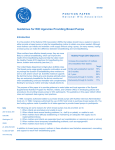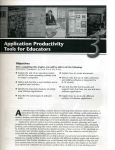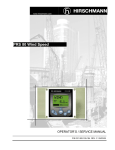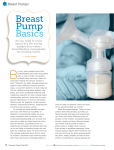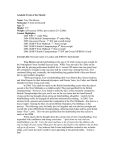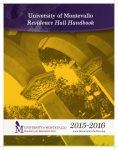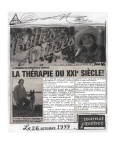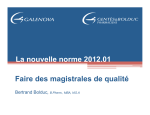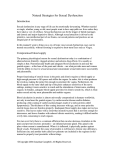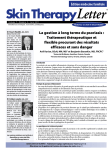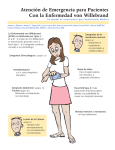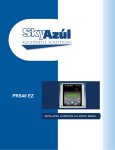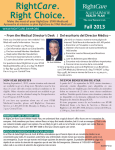Download NICU parent handbook
Transcript
Place photo of your baby here. NICU parent handbook This handbook belongs to_________________________________ Dear Parents, This is a handbook about learning how to care for your new baby while in the NICU and then at home. Learning about some of this care may seem scary. This is normal. However, with a little practice, taking care of your baby can become routine and easy to do. At Cook Children’s we have a special way of explaining information. We call it “Teach Back”. Learning new health information is not easy. You are not alone if you find things confusing at times. Sometimes we may explain information using words or sentences that are not clear. Teach Back helps us make sure we explained information in a clear way. This is how it works: 1. We explain your baby’s care by telling you: What you need to know about the care. What you need to do. Why doing this is important. 2. During our discussion, please tell us if the information is not clear. 3. Always ask questions about anything that is not clear. 4. We will then ask you to share with us what you heard us say or do. What do you know about this care? What do you need to do? Why is doing this important? 5. Listening to you helps us make sure that we used clear words and explained all of the important health information. Discharge & General Instructions These instructions are only general guidelines. Your doctor may give you specific instructions. If you have any questions or concerns, please call your doctor. Page 11 of of 45 45 Dec Dec 2012 2012 Copyright Copyright © © Cook Cook Children’s Children’s Page NICU Parent Handbook Table of Contents Getting Started Patient Registration ................................................................................................................ 3 Benefits of Breastfeeding & Human Milk .......................................................................... 4 Breast Milk is the Best Medicine .......................................................................................... 6 NICU Milk Bank .................................................................................................................... 8 Meet Your NICU Staff ........................................................................................................ 10 Getting Involved Comforting Your Baby Reading Your Baby’s Cues .................................................................................... 13 Managing Pain ......................................................................................................... 15 Touching & Holding Your Baby .......................................................................... 17 Your Baby’s Development Developmental Care ............................................................................................... 18 Your Baby’s Development .................................................................................... 20 Feeding Your Baby Non-nutritive Breastfeeding .................................................................................. 22 Infant Driven Feeding Program ........................................................................... 23 Bottle Feeding Your Baby ..................................................................................... 24 Helping Brothers & Sisters Understand ..................................................................... 25 Help for Parents Spiritual Care ........................................................................................................... 26 Social Workers ......................................................................................................... 27 Going Home Rooming-in & Going Home............................................................................................... 28 Baby Care at Home .............................................................................................................. 30 Feeding Your Baby............................................................................................................... 33 Breast Milk at Home ............................................................................................................ 34 Pediatrician & Appointments ............................................................................................. 35 Back to Sleep & Tummy to Play ........................................................................................ 36 Car Passenger Safety Guidelines ........................................................................................ 38 Developmental Follow-up .................................................................................................. 40 Helpful Resources ................................................................................................................ 41 Page 2 of 45 Dec 2012 Copyright © Cook Children’s Patient Registration Please register your baby at patient registration as soon as possible. On Admission We need updated information for your baby’s record that includes: 1. 2. 3. 4. 5. 6. Home address Insurance info Place of Employment Telephone number Emergency contact info Transferring hospital information 1. Information Go to Patient Registration located on the first floor next to Starbuck’s. Complete the above paperwork. 4. Review your consent form At this time, we need you to review each form you have signed. We understand this is a lot of information to read. Please let us know if something is not clear. The forms you will need to sign are: 1. CCHCS Acknowledgement of Privacy Practices/Financial Disclosure 2. Authorization for Consent to Treat 3. Non-Parental Authorization for Consent to Medical/Surgical Care and Treatment 4. CCPN Consent to Release Medical Information 5. CCPN Consent to Obtain Medical Information 2. Change your baby’s first name Most babies admitted to NICU have the first name “Baby Boy or Baby Girl” on the paperwork. Please give us your baby’s official first name. 3. Your baby’s last name Your baby’s last name while in the NICU will always be the Mother’s last name. This is a safety precaution. You can change this on the day of discharge if you would like. Page 3 of 45 Dec 2012 Copyright © Cook Children’s Discharge We may need to get in touch with you when you go home. Please make sure your account information is correct. Benefits of Breastfeeding & Human Milk Importance of breast milk Colostrum Mother’s milk is the best food for babies. Breast milk is easy for your baby to digest. This is the first milk you will produce for your baby. This is the first milk you or your baby will get out of your breast. 1. Breastfeeding helps promote a special time for a mother and baby to bond. 2. Breastfeeding makes comforting baby easier (less crying). Feeding colostrum gives your baby immune protection for life. 3. Breastfeeding helps protect a mother from some forms of female cancers. First 6 months The American Academy of Pediatrics recommends feeding your baby only breast milk for the first 6 months of life. Up to 1 year Continue to feed breast milk up to one year of age as you introduce solid foods to your baby. Breast milk protects your baby Breast milk: 1. Contains anti-bodies to protect your baby against infections. 2. Helps protect your baby’s stomach and intestines from harmful bacteria. 3. Can make your baby smarter because it promotes healthy development of the brain and nervous system. 4. Helps decrease the chances of your baby getting sick, having allergies, asthma, and ear infections. 5. Helps promote healthy mouth and facial growth. It also decreases the number of dental problems and helps with speech development. Page 4 of 45 Dec 2012 Copyright © Cook Children’s Making human milk for baby To make milk for your baby, you need to stimulate your breasts by feeding or pumping. If you have milk and want to keep your milk, you must either: 1. Feed your baby at the breast. 2. Remove the milk from your breasts by pumping, or hand expression. If your infant is sick or unable to breastfeed, you will need to remove the milk from your breasts by using a hospital grade pump. Pumping after baby is born! It is important to begin pumping within the first 6 hours after you have your baby. In Delivery Hospital No Insurance: If you do not have insurance, or if your insurance company will not pay for a pump, rental cost is about $55 - $80 per month. 1. Ask your nurse if you need a pump in your room or need help setting up your pump to use. WIC If you are qualified for WIC, call WIC for a breast pump to use when your baby is in the hospital. 2. Save any milk you pump. The hospital where you delivered will give you containers for storing your milk. WIC Tarrant County Warm Line 817-321-5416 3. When you leave the delivery hospital, remember to take all your pump parts. These are yours to keep. Notes: My pump brand: At Cook Children’s NICU Please bring your pump kits. 1. If you have either the Medela or the Ameda brand pumping kit, you may use it with one of the pumps in your baby’s room. 2. If you have a WIC pump, please bring your pump and pump kit when you come to NICU. Getting a Pump for Home Use Please call your obstetrician if you need a prescription for an electric breast pump. 1. You cannot buy hospital grade pumps at any store. 2. You can rent hospital grade breast pumps. Insurance: If you have insurance, call your insurance company to see if they will cover the cost. If so, they may tell you where to get your pump. Page 5 of 45 Dec 2012 Copyright © Cook Children’s Place rented: Date: Breast Milk is the Best Medicine Providing your baby breast milk Keep a Pumping Log Your breast milk is more than a food. Breast milk is a medicine that your baby needs. In fact, your breast milk may be the most important medicine anyone can give to your baby, and only YOU can give it. You may get different amounts of milk each time you pump. This is normal. You may also get different amounts from each breast. If you choose not to breast feed, you can still pump breast milk. It is important to start breast milk pumping within 6 hours of baby’s birth. 1. Consistent pumping the first 2-3 weeks helps to establish your milk supply. 2. The first weeks of pumping determines your long term supply (next 6 months to a year). Establishing milk supply Using a hospital grade electric breast pump, pump at least 8 times per 24 hours to establish or increase your milk supply. 1. It is important to detect decreases in milk production as soon as possible. 2. Tracking the amount of milk you pump in 24 hours helps identify decreasing production. Talk to your Lactation Consultant 1. Keep the Pumping Log during your infant’s hospital stay. If you see that the amount of milk you remove from your breast is starting to decrease, talk with your baby’s nurse or a Lactation Consultant. 2. You may want to speak to a Lactation Consultant if you have tender or painful areas in your breasts. Cook Lactation Department Office 682-885-7144 1. Pump every 2-3 hours around the clock until milk supply is well established (not going past 3 hours without pumping). 2. Pump after holding or providing Kangaroo Care to your infant. 3. Pump after breastfeeding for 2-3 minutes after milk flow stops or slows down. 4. Do not skip, delay, or decrease the number of times you pump. 5. Pump both breasts at the same time. (this helps you produce more milk). www.medelabreastfeedingus.com Page 6 of 45 Dec 2012 Copyright © Cook Children’s Pumping Before pumping, wash your hands with soap and water for at least 20 seconds. Wash both sides of your hands & under your nails. Shower or bathe daily. Ameda Breast Pump Instructions 1. Always pump into a clean container. 2. Massage both breasts and hand express to start the milk flowing before pumping with the machine. 3. When your flow slows down, massage your breast to help you empty your breast completely. 4. Start each pumping session with the cycle on “Max.” As you start to see drops of milk or after 2 minutes (whichever comes first), move the cycle knob to halfway between “Min” and “Max.” 5. Set the pump on a low vacuum setting. Gradually increase it to your comfort. 6. Pump both breasts for at least 10-15 minutes. Gradually over time, as milk volume increases increase pumping time to 15-20 minutes. 7. If you are planning to freeze your milk, only fill the containers ¾ full. 8. After pumping, you may want to hand express your milk. Hand expression can help you to make more milk. If you need help learning how to hand express, you may ask for a Lactation Consultant. Page 7 of 45 Dec 2012 Copyright © Cook Children’s Cleaning Your Breast Pump 1. Rinse your equipment in cold water, followed with hot soapy water using liquid soap in the hospital or liquid dishwashing soap at home. 2. Let equipment air dry on paper towels in a clean, dry place. 3. You may want to sterilize your pump kit once a day by either boiling for 15 minutes or washing in a dishwasher on the sanitation cycle. 4. Keep your tubing clean and dry. Do not run any liquids through the tubing of your pump kit. Notes: NICU Milk Bank storing, transporting, & labeling The Milk Bank does 3 things: 1. Stores your milk at the correct temperature. 2. Provides you with barcode labels, storage containers, yellow dots. 3. Adds extra calories or nutrients to your breast milk if necessary. A Milk Tech will pick up your overnight milk in the morning. Your baby’s milk will be prepared for 24 hours then delivered to your baby’s unit daily. Milk Bank Hours of operation: Labeling 9 am – 9 pm Labeling your milk with your baby’s label is the safest way to store milk for your baby. 1. Place expressed breast milk in a storage container or syringe. 2. Place one of your baby’s name identification barcode labels on the storage container. 3. Place a date/time/medicine milk label on the storage container. 4. Write the date & time pumped, and any medicine taken by mom, on the label. 5. If your baby is less than 3 weeks old, and born before 36 weeks place a yellow dot on the storage container or syringe. Dropping Milk Off Drop off most milk during Milk Bank hours at the window to the Milk Tech. When dropping milk off at the Milk Bank remember to pick up storage supplies if needed. If Milk Bank is closed and you need supplies, you ask your baby’s nurse. Page 8 of 45 Dec 2012 Copyright © Cook Children’s If you arrive to the NICU unit outside of Milk Bank hours, give your milk to your baby’s nurse to refrigerate. Keep Breast Milk Healthy & Safe Storing Breast Milk At Home Refrigerate fresh milk immediately! Returning to NICU within 24 hours of pumping Store this milk in refrigerator. Returning to NICU after 24 hours of pumping Store this milk in freezer. Refrigerator & Freezer 1. Refrigerator: Fresh milk keeps 24 to 48 hours. 2. Refrigerator Freezer: Keeps breast milk for 3 months. A freezer that keeps ice cream hard is cold enough to store your milk. 3. Deep Freezer: Keeps breast milk for 3 to 6 months. Bringing Breast Milk from home to NICU Fresh Milk: Transport in packed ice. Frozen Milk: Transport in insulated container with a frozen gel pack. As soon as you arrive to Cook, you can check in your milk at our NICU Milk Bank (see Milk Bank Process for Parents). Page 9 of 45 Dec 2012 Copyright © Cook Children’s Meet Your NICU Staff Your baby has special needs & we have specially trained staff to take care of them! Audiologist I find out how well your baby is hearing. I use special equipment to test your baby’s response to different sounds. Before you go home, I do a “Hearing Screen”. I’ll send you a letter explaining what we find before you leave. Please call me if you have any questions. Baby Buddy We are a group of volunteers. We help NICU staff take care of the babies. We help wherever and whenever needed. We can hold babies, do laundry, clean beds, and put together mobiles. We are interviewed by the Cook Children’s Volunteer program. before we become a Baby Buddy. We also have a background check and receive special training on the importance of hand washing, confidentiality, and unit rules. Care Partner We are trained to help care for your baby and work with the nurses. We can give baths, do feedings, change clothes, etc. Some of us have been specially trained to help the staff draw your baby’s labs. We are also the group teaching the NICU CPR and Car Seat Class. This is a very important class, so plan to attend before going home. Case Manager I am a registered nurse. I work with your NICU team and insurance company. I’m the person who can help you find out what equipment and services your insurance company pays for while in NICU and at home. I also help arrange for your baby’s special needs such as eye exams, car seat tests, developmental follow-up, etc. Certified Infant Massage Instructor I am a trained and certified infant massage instructor. Infant massage is a great way to bond with your baby. It also helps with your baby’s development. I teach infant massage classes to our NICU parents and caregivers. I look forward to meeting you. Chaplain For parents of a baby in the NICU, life can become a whirlwind of emotions. Please know that we are here 24 hours a day to help you and your family. We can provide spiritual and emotional support or just be there with you if the going gets rough. Please let us know how we can help. Child Life Specialist Consulting Doctor We work with patients, families, and siblings to “normalize” the hospital environment and decrease stress and anxiety. We are trained to facilitate play activities, provide education about procedures, teach coping skills, and offer emotional and developmental support. We also lead a weekly support group for NICU families called “the Cradle Club”. This is a social time where you can meet some of our other parents or work on fun activities such as scrapbooking. At times, your neonatologist may need to consult with other doctors about your baby. I am a pediatric doctor specializing in a certain area of medicine such as the lungs, the eyes, surgery, etc. I am a member of your NICU healthcare team and will work very close with your doctors and nurses. Page 10 of 45 Dec 2012 Copyright © Cook Children’s Dietician I have been trained in nutrition. This includes human milk, vitamin and mineral supplements, and infant formulas. I monitor what your baby is fed and how your baby grows. At the time of discharge, I will explain your baby’s nutritional needs and show you how to prepare and store any special formulas. Lactation Consultant It’s a fact that breast milk provides the best nutrition for growth and development of all fullterm or premature babies. I have been specially trained to provide you with support and information for breastfeeding your baby. Milk Tech I am specially trained to protect your breast milk. I help you store your milk while your baby is in the hospital. I also provide you with needed supplies, mix your milk for the nurses, and deliver your milk to your baby. Neonatologist I am the main doctor responsible for your baby's care. I have received advanced training in caring for premature and newborn babies who require intensive care after birth. Although there are many different people involved in your baby's care while in NICU, I am the doctor who will coordinate the care your baby needs. Please know there is a neonatologist present in the hospital at all times. Nurse I am an RN. I have had special training in caring for critically ill newborns in the NICU. I am the team member who will be caring for your baby most of the time. I work a 12 hour shift, so each day you will have 2 different nurses caring for your baby. Neonatal Nurse Practitioner (NNP) I am an RN with an advanced educational background in neonatology, including a master's degree in nursing, and additional certification. I check on your baby every day and work closely with the doctors and nurses to help coordinate your baby’s care. Occupational & Physical Therapist We check on your baby’s developmental skills. We look at your baby’s movement, strength, and muscle tone. We evaluate how well you baby sees, postures, and responses to touch and sound. Based on our assessment, we develop a plan of care to meet your baby’s developmental needs. Orientee I am a new employee in training for a position at Cook Children’s. I work with an experienced staff member. Pharmacist I help take care of your baby’s medicines and IV nutrition. I work closely with your doctors and nurses to make sure each medicine is safe and helpful for your baby. Respiratory Therapist I take care of your baby’s breathing needs. I set up breathing equipment and give treatments. Before your baby goes home, I will help you plan and prepare for any breathing treatments or equipment that you may need. Secretary You will see me at the nursing station. I am responsible for answering the phones, the call buttons, and monitoring the visitation list. Social Worker I visit with all families in NICU. I can help you deal with new concerns about your premature baby. I can also help you adjust to the sometimes stressful NICU environment. If necessary, I can help you with lodging and transportation, and will give you a list of community resources for when you go home. Speech Therapist I look for signs that your baby is ready to feed and then I help your baby learn how to do it. I may suggest a special nipple, thickening of feeds, or use special techniques to help your baby suck, swallow, and breathe. I work closely with your doctors and nurses to develop a plan of care for feeding your baby. Page 11 of 45 Dec 2012 Copyright © Cook Children’s Student Our hospital is very proud to provide learning experiences for our future in healthcare. You will see students with the nurses, respiratory therapists and other staff caring for your baby. Translator Interpreter I am a qualified interpreter for parents and families who do not speak English or can better understand information in another language. Please let your NICU nurse know if there is any way I can help you or your family. My NICU Staff Department Page 12 of 45 Dec 2012 Copyright © Cook Children’s Staff Member Name Reading Your Baby’s Cues Learning how your baby communicates Babies have needs just like we do and are happier when we can meet these needs. Cues are all the things your baby tries to tell you, using ways other than words. Premature or Sick Baby’s Brain I am happy if: 1. 2. 3. 4. I am alert and my eyes are open. My face, body, arms and legs are relaxed. I may try to smile & suck calmly on my pacifier. I look at objects or people. A premature baby’s brain cannot handle the stress that a full-term baby can. Premature babies try to tell us when they are feeling stressed. We can avoid adding more stress and help calm by responding to their cues. By learning these cues, you can help your baby: 1. Be less stressed 2. Gain weight 3. Grow and develop Learn about your baby’s cues 1. Holding and caring for your baby will help you learn your baby’s cues. I am not happy & need some help if: 1. Crying or fussy. 2. Yawning, gagging, sneezing, or hiccups. 3. Arching or extending my neck. 4. Outstretched hand (“stop sign”). 5. Closing my eyes or looking away. 6. Opening my hand & spreading my fingers. 7. Frown, grimace, or grunt. 8. Skin color changes in my face. 2. Visiting as much as possible helps you learn how your baby communicates. 3. Always ask your nurse or therapist if you have any questions. You can tell when your baby is: 1. 2. 3. 4. Feeling happy Feeling stress Calming self down Needing help to calm down. Page 13 of 45 Dec 2012 Copyright © Cook Children’s Coping Skills: I am calming myself 1. I clasp my hands together. 2. I suck on my hand, fingers, or a pacifier. 3. I take a nap (to shut out sights and sounds). Ways to help your baby calm down Sounds I Hear 1. Talk to me before you touch me. 2. Decrease the noise in the room. Touching Me 1. Hold me quietly and firmly with still hands. 2. Tuck my arms close to my chest and bring my hands together. 3. Let me hold your finger. 4. Place your hand on my feet firmly to help bend my legs so I can stay tucked. 5. Help me bring my hands to my face or mouth. 6. Place pacifier to my lips and see if I will suck on it. Lights in the Room 1. Limit bright lights in my face. 2. Shade my eyes from the light. Taking Care of Me 1. Remember, I may get stressed when you change my diaper or care for me. 2. Please give me a break. Help me calm down and then finish my cares. Dear Family, Please pay close attention to what I am doing or saying. Understanding how I feel will help me grow bigger and stronger and that’s what we all want! Page 14 of 45 Dec 2012 Copyright © Cook Children’s PAIN Pain hurts Pain is a feeling that hurts. Some pain cannot be stopped, but at Cook Children’s we believe almost all pain can be eased. Taking care of your baby’s pain is the concern of our entire health care team. Pain can be steady, throbbing, stabbing, burning, aching, or pinching. It can last a short time or seem to never go away. A treatment, illness, disease, injury or surgery can cause pain. Pain means that a part of your body needs rest to heal. Measuring pain We check all babies for pain. We check for pain at least every 12 hours. We also check as often as needed to make sure all pain is controlled N-PASS Pain Assessment Scale (N-PASS stands for Neonatal Pain, Agitation, and Sedation Scale) NICU uses a pain tool that is just for premature or newborn babies. 1. We check: Your baby’s heart rate, breathing rate, blood pressure Your baby’s oxygen needs 2. We watch: How often your baby cries and how easy they calm down. How your baby reacts to touch and sound. How stiff your baby’s muscles are. 3. We look for: Facial expressions. Tightly closed eyes or furrowed eye brows can mean your baby is in pain. Parents Parents are a big part of our pain management team. You are learning about your baby. You know your baby better than anyone else. You can tell us about even the slightest change in your baby’s behavior. Page 15 of 45 Dec 2012 Copyright © Cook Children’s To help us better understand and learn about your baby’s pain history we may ask: How do you know when your baby is hurting? What does your baby do when hurting? How pain has been treated in the past? Did this way work? What didn’t work? Easing Pain 1. Needle Sticks Starting IVs or drawing blood can be almost painless. We have special ways to help your baby feel less pain. Please ask us if we do not tell you about it. We will also warm your baby’s foot with a warm pack before blood draws from their heels. 2. Pacifier dipped in sugar water (sucrose) This often comforts small babies before, during, or after a needle stick. Parents can hold this pacifier. 3. Relaxing Room A dark and quiet room can help your baby to relax. You can help us keep a calm room by silencing your cell phone, talking quietly, and reminding visitors and staff to use quiet voices. 4. Pain medicine Although all of these methods (holding, cuddling, medical play, etc.) help children feel better, sometimes we also use pain medicine. Your doctor or nurse will explain what medicine your child is on and how it works. Please remember that treating pain is ongoing. 1. We will regularly check your baby for pain throughout your stay at Cook Children’s. 2. Your questions about your baby’s pain and treatment are very important to us. 3. Always let us know if our answers are not clear. 4. Please feel free to discuss your questions or concerns with any member of our health care team. Page 16 of 45 Dec 2012 Copyright © Cook Children’s Touching and Holding Your Baby Touching and holding your baby is important to help: 1. Comfort your baby 2. Get to know your baby 3. Bond with your baby 4. Support your baby’s growth and development Babies born prematurely or sick need different types of touch or holding. Your baby may have: 1. Medical lines 2. Special equipment 3. Feeding tubes There are several ways to touch and hold your baby. Some common ways include: 1. Encircled holding 2. Kangaroo care 3. Swaddled holding 4. Cradle holding 5. Infant massage A staff member will help you learn how to touch and hold your baby. What you need to do: 1. Always wash your hands before touching or holding your baby. 2. Learn about your baby’s medical lines and equipment. 3. Get to know your baby’s cues. 4. Learn different ways to touch and hold your baby. 5. Never be afraid to ask a staff member how to touch or hold your baby. 6. Visit your baby as often as you can. Page 17 of 45 Dec 2012 Copyright © Cook Children’s DEVELOPMENTAL CARE What is developmental care? 1. Z-Flo Mattress We frequently use this phrase in the NICU. Babies born early need special attention to support their growth. Developmental care means providing your baby with every opportunity for the best possible progress. This includes teaching you how to: This mattress is made of soft material. We can mold and shape it to your baby’s size, condition, and equipment. It provides comfort and support. 1. Touch, hold, massage, and use slow gentle movements. Sometimes just a firm hand on your baby’s head, feet, or chest can be very calming. 2. Position your baby and perform gentle exercises. This helps to develop better aligned joints and muscle tone. 3. Protect your baby from bright lights and loud noises. This helps to protect your baby’s immature and sensitive brain. Special Positioning Premature babies feel more secure when they curl up with their legs tucked and arms bent. When they sleep, they like to be supported. Because premature babies have poor muscle strength, they cannot stay in this curled position by themselves. We use several different types of devices to relieve pressure or position your baby toward midline and flexion (curled slightly). Page 18 of 45 Dec 2012 Copyright © Cook Children’s 2. Bed Buddy This is a bead filled bag covered with soft fleece. We gently shape it around your baby. When your baby pushes against the bag, they can feel the beads moving back. This is similar to what a baby feels in your womb. 3. FROGS 6. Safe Sleeping for Your Baby This is a bean bag that we can use for support around your baby’s head, neck, or hips. We can use it to help position an arm or leg or use it as extra set of hands during procedures. SLEEP SACKS This generous sack design allows room for kicking, but cannot be kicked off so baby stays warm. 4. BOPPY PILLOW This is a pillow for our moms to use when breast feeding. You can also use it for supporting and postioning your baby. 5. Nurturing Item … NICU LOVIES Research shows that premature babies born as early as 26 weeks may respond to different smells. This is a cloth that you tuck close to your skin to absorb your scent. You can then leave the scented lovie next to your baby for comfort when you are not there. Page 19 of 45 Dec 2012 Copyright © Cook Children’s Lights & Sounds Premature babies are more sensitive to their environment than full-term babies and react to changes in light and sound. Lighting: Natural light is better than electrical lights. Keep background lighting low. Use dimmer switch to prevent the sudden change of brightness. Sound: Keep room quiet. Use soft voice when talking to your baby or others. Close cabinets, drawers, and doors gently to avoid loud noises. Your Baby’s Development Providing positioning, warmth, quiet, and darkness For nine months, babies live a protected life in their mother’s womb. This type of protection (positioning, warmth, quiet, and darkness) is essential for their growth and development. Premature babies must also have this same type of protection and care: 1. 2. 3. 4. Positioning to support infant’s posture Warm environment Quiet environment Dark environment Developmental needs will change As your baby gets older, these developmental needs will change. Parents and families can help a baby’s growth and development by understanding what these needs are and how to provide them. Developing organs: a. Brain b. Lungs c. Heart and blood vessels d. Intestines e. Bones and muscles f. Skin Your baby may need help with: a. Breathing b. Blood pressure c. Body temperature d. Eating e. Sleeping f. Coping with pain g. Calming Page 20 of 45 Dec 2012 Copyright © Cook Children’s Your baby may need: a. Medical equipment b. Lines and tubes c. Special bed d. Positioning aids e. Minimal touch or movement f. Quiet, dark environment Before going home, your baby will need to develop the abilities to: a. Breathe without help b. Maintain heart rate and blood pressure c. Maintain body temperature d. Wake up and take full feeds e. Gain weight Page 21 of 45 Dec 2012 Copyright © Cook Children’s Touch & Movement 26 weeks or less 26 to 28 weeks 28 to 30 weeks 30 to 32 weeks Does not tolerate well May tolerate firm but gentle touch Kangaroo Care Cannot tolerate rocking Benefits from touch & Kangaroo Care Benefits from touch & Kangaroo Care May not like rocking May not like rocking 32 to 36 weeks Benefits from touch & Kangaroo Care 36 to 44 weeks Benefits from Kangaroo Care & Infant Massage Beginning to tolerate rocking Improved tolerance for rocking Light & Sound Does not tolerate well Does not tolerate well May not tolerate well May not tolerate dim lighting & quiet voices Begins tolerating dim lighting, quiet voices Easily over-stimulated by light and sound Improved tolerance to light & sound Breathing Needs help breathing Needs help breathing May need help breathing Getting stronger May need some help Breathing & regulating heart rate improving Breathing & regulating heart rate improving Feeding Nutrition through feeding tube or IV Nutrition through feeding tube or IV Nutrition through feeding tube or IV Suck getting stronger May need some nutrition via feeding tube Needs feeding tube for adequate nutrition. May start to wake up before feed Suck getting stronger Gaining weight Rapid brain growth Needs sleep to Rapid brain growth Needs sleep to conserve energy Has a special mattress or positioning aid May have special mattress & positioning aids Temperature control improving May be able to wear clothes and sleep in a crib Growing Sleeping Rapid brain growth Needs sleep to conserve energy Has a special mattress or positioning aid Rapid brain growth Needs sleep to Rapid brain Has a special mattress or positioning aid Has a special mattress or positioning aid conserve energy growth Needs sleep to conserve energy conserve energy Suck strong & coordinated Works on taking all feeds by breast or bottle Gaining weight Wakes up before feeds some of the time Rapid brain growth Needs sleep to conserve energy May have positioning aids Temperature control improving Can usually wear clothes and sleep in a crib Transitioning to back for safe sleeping at home No positioning aids when close to going home Non-Nutritive Breastfeeding Why Non-nutritive Breastfeeding? Non-nutritive breastfeeding means your baby latches on to your breast and suckles after you have removed your milk from your breast using a breast pump. Getting Mother Ready 1. Pump your breast for at least 15 minutes just before putting your baby to your breast. (Your breast is never 100% empty; your baby will get some milk). 2. Use pillows to support you and your baby. Baby Benefits 1. Non-nutritive breastfeeding or sucking at breast is a way your baby can learn to breastfeed. 2. Practicing non-nutritive sucking at breast will help your baby learn to suck, swallow, and breathe while feeding. Mother Benefits 1. Non-nutritive breastfeeding can help you to practice positioning and latching your infant to your breast. 2. Non-nutritive sucking at breast is a good way to increase the amount of milk you pump in a day. Mother & Baby Benefits 1. Non-nutritive sucking at breast will help you and baby to get to know one another during feeding times. 2. You can do Kangaroo Care (skin-toskin) with your baby during nonnutritive breastfeeding. Getting Baby Ready You can practice non-nutritive breastfeeding if your baby: 1. Has stable vital signs 2. Can swallow saliva 3. Can suck on a pacifier Your baby does not need a doctor’s order to practice Non-nutritive Breastfeeding. Page 22 of 45 Dec 2012 Copyright © Cook Children’s 3. Position baby’s tummy to your tummy in a nursing position that is comfortable. 4. Line baby’s nose just across from your nipple. 5. Tease baby using your nipple: Wait for baby’s mouth to open wide as if yawning. Gently pull baby in close by pressing in on the upper back and shoulders (using your finger tips to support his head/neck). Always let us know if you need help with positioning and latching your baby. After non-nutritive breastfeeding, you will need to hand express or pump the remaining milk out of your breast to store (see Hand Expression). Infant Driven Feeding Program For babies at least 32 weeks of age who can swallow saliva and have stable vital signs Beginning to feed to your baby is an exciting time, but it can also be very challenging. Both you and your baby will need to learn new skills that take time and lots of practice. 1. You need to learn how to help your baby get ready for feedings. 2. Your baby needs to learn how to safely take these feedings without choking. The Infant Driven Feeding Program is not based on how much milk your baby takes. Your baby may feed once a day or several times a day. A successful feeding is about: 1. Recognizing your baby’s hunger cues. These cues may be different each time and can occur at different times each day: Wakes up before feeding times Wakes up when you change the diaper and take temperature Brings hands to mouth Sucks on a pacifier Handles diaper change, temperature change, kangaroo care, and non-nutritive breastfeeding without stress cues 2. Recognizing signs your baby needs to stop: Goes to sleep Stops sucking Won’t open his mouth Turns away from the bottle or breast Seems upset or not interested in feeding Coughs, chokes Breathes faster than when not feeding 3. Preparing your baby’s room. A quiet room helps your baby focus better. 4. Helping your baby suck and swallow during feeds. The way you hold your baby, the way you position the bottle, and even the way you place the nipple can provide safer and easier feedings. Please understand, a successful feeding is not based on much your milk your baby is taking. The number one goal of our program is to turn each feeding into a calm, safe, and nurturing experience shared by both you and your baby. Page 23 of 45 Dec 2012 Copyright © Cook Children’s Bottle Feeding Your Baby Feeding Time Special Ways of Feeding Should always be a nurturing, calm time for both you and your baby. We may teach you some special ways to help your baby with the feeding. Some examples are: Suck, Swallow, Breathe Smooth and coordinated sucking, swallowing, and breathing are all necessary for a safe feeding. Your baby must learn this process. 1. It takes lots of energy to suck, swallow, and breath. 2. Your baby can concentrate on sucking and feed better when awake. 3. At first, your baby may: Cough or choke Tire quickly Refuse to suck or suck poorly But as you and your baby get more practice, feedings will improve. 1. External Pacing Helps baby with breathing. Take the bottle out of your baby’s mouth or tip it down. This lets your baby take a breath. 2. Controlling how fast milk flows There are many different types of nipples. When babies are first learning to take a bottle, they often need a slow flow nipple. 3. Sidelying Holding your baby on their side on a pillow or your lap is often easier for babies first learning to bottle feed. Prepare your baby’s room It’s ok to talk to your baby in a soft voice Limit noise in the room from the radio, cell phone, or talking loudly Try not to distract your baby with rocking Make eye contact Your Bottles When your baby is getting close to going home, bring in the bottles and nipples that you plan to use at home. Let your nurse know if you would like to try them. Page 24 of 45 Dec 2012 Copyright © Cook Children’s Feeding Specialist (Speech Therapist) If your baby is having trouble feeding, we may need to consult with a feeding specialist. What About Me? Helping Brothers & Sisters Understand Acting Out All big brothers and sisters know when something in the family is not right. Change can be very scary, especially for younger children. How much children understand will depend on their age. Many children feel lost, out of control, or insecure. Acting out is a common way for expressing these feelings. Big Brothers & Sisters may: Become quiet and withdrawn Have trouble eating or sleeping Start thumb sucking Cry or become angry for no reason Regain an attachment to a toy or blanket Regress with toilet training or have night time accidents Act out at school Be clingy and want undivided attention Learning about the different tubes Child Life in NICU Children feel the safest when they know what to expect. NICU Child Life Specialists can help big brothers and sisters understand the changes taking place in their family and with their new baby. If you have concerns about an older brother or sister, ask to speak with our child life specialist. Brothers & Sisters Visiting NICU Many children are eager to meet their new brother or sister. If possible, we encourage our families to arrange for a sibling visit. 1. Please call our NICU Child Life Specialist if you would like to schedule a visit. 2. Child Life will meet with and you to discuss the guidelines we must follow. 3. NICU can be very scary for young children. Preparing brothers and sisters for the sights and sounds of NICU is an important first step. Page 25 of 45 Dec 2012 Copyright © Cook Children’s Spiritual Care Chaplains are available at all times Chaplains care for the needs of persons of all faith backgrounds or of no faith backgrounds. Talking to a chaplain is often helpful. Chaplains support you, your child and your family in all situations. Chaplains are available to discuss spiritual and/or ethical concerns. Chaplains provide information regarding faith resources outside the Medical Center. Chaplains are familiar with resources related to spiritual and ethical needs and concerns. Talking to a chaplain 1. Tell your nurse you would like to talk with the chaplain for care and/or support. 2. Call the hospital operator and ask to have a chaplain paged. 3. Access the Get Well Network and ask for a chaplain. Page 26 of 45 Dec 2012 Copyright © Cook Children’s Social Workers Social workers meet all NICU families Social workers are a part of your NICU team. A social worker will call or meet with you within the first few days of admission to NICU. Discharge Planning We can coordinate with the NICU team to ensure a safe and effective discharge home. How to find a social worker What we do Social workers make sure that you and your family’s experience in the hospital will be as comfortable as possible. We work with your NICU doctors, nurses, and other staff and can help you with many different problems or concerns including: Stresses of NICU We are here to help you and your family deal with the many stresses of having a baby in NICU. We can provide emotional support for you and your family, help you find lodging, or help arrange for transportation. Education & NICU Staff We help arrange meetings with your different staff members. We can help you find answers and understand choices. Financial Worries We can arrange for you to talk to financial counselors here at Cook Children’s to help you see if you qualify for financial assistance. Community Programs Your family may be facing many issues during this time. We can help you find a solution and arrange for community programs and services in your area. Page 27 of 45 Dec 2012 Copyright © Cook Children’s NICU social workers are available in the unit Monday through Friday from 8:30 am - 8:30 pm. Social workers are available for emergencies: 24 hours a day, 7 days a week. If you need to get in touch with a social worker: Second floor: call 682-885-3681 or 682-885-6982 Third floor: call 682-885-6981 Or ask the NICU staff for help calling us. Rooming-in & Going Home Discharge Instructions Rooming-in is a time when you will provide all of the care for your baby while in the hospital. This is a list of what you may need to do to take care of your baby during rooming-in and at home. We will review each item on this list with you before you room-in. Before Rooming-in What I need to know: The name of your pediatrician, address, phone number Completed CPR, and Car Seat Classes Watch Shaken Baby video What I need to bring: Why this is important: We will review each medicine with you. Please remember, you are still in the hospital and need to wear night clothes that are not revealing. Floors can be slippery without shoes. Your baby’s filled prescriptions from your pharmacy Your picture ID (drivers license, student ID) Your baby’s car seat Baby blankets and clothing Breast feeding supplies from home Modest night wear and footwear Personal hygiene products Things to watch for & do What to watch for: High or low temperature Cough Throwing up Sleepier or fussier than usual Not eating or drinking Changes in dirty or wet diapers What to do: Take notes of what baby is doing What you did and when How baby responded Calling nurse when rooming-in & baby’s doctor when home Why this is important: What can happen if my baby has these problems Page 28 of 45 Dec 2012 Copyright © Cook Children’s Medicines What to know about this medicine: What to do: Giving medicine in a dropper or special syringe Times for giving medicine Why this is important: How this medicine is helping my baby Why your baby needs this medicine Side effects Getting refills Storing it Missing a dose Follow-up appointments What to know about follow-up appointments: Names of each doctor or clinic Addresses and telephone numbers Dates & times of each appointment What to do: Why this is important: Why my baby needs this follow-up appointment Doctors will check on your baby after discharge Make all your baby’s needed appointments When to call for an appointment Where to keep track of follow-up appointments Change or cancel appointments Take a copy of your discharge paper work with you Feeding type What I need to know about my baby’s feedings: What I need to do: Why this is important: Name of formula Additives to my breast milk or formula and why How much and how often should my baby eat Getting more formula Mixing the formula Storing my breast milk or formula Labeling Transporting How do I know my baby is eating enough Helpful information to know about rooming-in: 1. The visitation policy is enforced during “rooming-in”. 2. If the mom is under 18 years old, the father cannot spend the night with unless they are legally married. Please talk to social worker if you have questions about this. 3. One parent will be expected to stay with the baby at all times. 4. Do not have sex. 5. On the day of discharge, plan to leave in the afternoon after the doctors round. Page 29 of 45 Dec 2012 Copyright © Cook Children’s Baby Care at Home Everyone (you, family, and visitors) must wash hands before touching baby! 1. Bath Time: When do I give a bath? 2. 3. 4. 5. 1. When baby is awake Keep your hand on your baby at all times. 6. 2. Not After feedings All the movement can make your baby spit up. 7. 8. 3. Two to three times a week or 9. when dirty Start with the face. Clean eyes from the nose side to the ear side. 10. 11. 4. When the room is warm Babies get cold. Give bath as fast as can to keep warm. 5. Do not put in water until cord healed This can cause an infection. 12. Cord Care 13. 1. Keep cord stump dry No tub baths until the cord has healed. 14. 15. 2. Only clean with warm soapy water 16. until the cord has healed 17. 18. 3. Call the doctor if there is redness, 19. odor, or drainage Taking a Temperature (normal range 97.5F - 99.3F) 20. 21. 1. Rectal Call doctor if higher than 100.4F 22. 23. 2. Axillary (under arm) Call doctor if higher than 100.4F Check baby’s diaper when fussy & before feedings 24. 25. 1. Clean diaper area Use baby wipe. Clean from front to back. 26. 27. 2. Do not use powder Babies can breathe in the powder. Wet Diapers: Should have 6 to 10 wet diapers a day 28. 29. 1. Color 30. 31. 2. Amount Page 30 of 45 Dec 2012 Copyright © Cook Children’s May be clear or yellow. Change diaper when wet to avoid rash. Dirty Diapers: Have different amounts of dirty diapers 32. 33. 1. Color May be yellow, green, or brown 34. 35. 2. Consistency Soft, mushy, or grainy When to call doctor 36. 37. 1. Stool Baby has diarrhea for more than 1 day Stool is hard Baby has no dirty diapers for 3 days 38. 39. 2. Urine Has 2 dry diapers in a row at feeding times Dehydration Call your doctor if you think your baby may be dehydrated. This may happen if your baby: Throws up most of 2 feedings in a row Has watery bowels Has two dry diapers in a row at feeding times Soft spot is sunken in Mouth or eyes look dry Clothing 1. Make sure your baby’s clothes are safe. This means: Flame resistant Buttons not loose Ribbons not long 2. Do not overdress your baby. Most babies only need one more layer than you are comfortable in. For example, if you are wearing one shirt, then your baby will need one shirt plus a blanket. 3. Cap Keeps head warm Check under hat often Page 31 of 45 Dec 2012 Copyright © Cook Children’s Poisons and Other Dangers Keep dangerous things like cleaners, soaps, or medicines out of your baby’s reach. Know your poison control phone number. Check to make sure your household plants are not poisonous. Basic Safety Keep one hand on your baby at all times when on a high surface or in water. Do not prop bottles. Do not leave your baby alone with a bottle. Do not take your baby around people who are sick. Do not smoke around your baby. Avoid day cares, church child care, and crowded areas until released by your doctor. Never leave your baby alone in the car. Never leave your baby alone with a stranger Cover electrical outlets. Emergency Procedures Keep emergency numbers by the phone – police, ambulance, fire department, poison control, pediatrician, and neighbors. BABY SITTERS Check credentials of babysitters and child care providers. Have your babysitter learn CPR. Teach care providers to use the bulb syringe. Teach Period of PURPLE Crying. Show where emergency numbers are. Page 32 of 45 Dec 2012 Copyright © Cook Children’s Feeding Your Baby Babies have different nutrition needs at each stage of growth. 1. We will give you feeding instructions for your baby before you go home. 5. Warming Formula or Breast Milk You may use a bottle warmer or set the bottle in a pan or bowl of warm (not boiling) water for 5-10 minutes. 2. Your baby may need a special formula. 3. Your baby may need “fortified” breast milk. This is adding extra nutrients to your expressed breast milk, usually to give it more calories. 4. Some babies may need to follow a feeding schedule. General Safe Practices 1. Clean Always wash your hands before feedings and before preparing bottles. Never warm in the microwave! 6. Breast Milk Storage Freshly pumped breast milk is good for: 5 days in the refrigerator 3 months in a standard home freezer 6 to 12 months in a deep freezer Thawed breast milk & fortified breast milk: Good for 24 hours in the refrigerator. Do NOT freeze thawed breast milk or fortified breast milk. Sterilize all bottles and supplies. 2. Formula baby does not drink Throw out formula that your baby does not drink within 1 hour. Fortifying Expressed Breast Milk 3. Formula Water Although most tap water is safe, boil all water used for mixing formula. 2. Add ___ teaspoon __________________ powder. Boil 1 minute at a rolling boil and let cool. 4. Refrigerate Always place prepared formula in refrigerator after you open or mix it. You may store formula up to 24 hours if refrigerated immediately. Do NOT freeze formula Page 33 of 45 Dec 2012 Copyright © Cook Children’s 1. Measure 90 ml or 3 ounces of expressed breast milk. 3. Mix well to equal ____ calories per ounce. Be sure to take your expressed breast milk home from the unit! My Dietitian: _______________________ Phone Number:_____________________ Breast Milk at Home Safe handling & storage Breast Milk Storage & Thawing Safely Thawing Breast Milk Bad bacteria can grow in your milk and make your baby very sick. The following guidelines for will keep your baby healthy. You can thaw frozen breast milk by either: 1. Placing bottle from freezer in refrigerator. 2. Swirling bottle in bowl of warm water. 1. Wash your hands before expressing or handling milk. Do not use the microwave oven to thaw or heat bottles of breast milk!! 1. Microwaves do not heat liquids evenly. 2. Bottles may explode if left in microwave too long. 3. Excess heat can destroy the nutrient quality of the expressed milk. 2. Do not add fresh milk to already frozen milk in the same storage container. It is best not to mix the two. 3. Do not save milk from a used bottle for use at another feeding. 4. If delivering breast milk to a childcare provider always clearly label the container with your child’s name and date. Where Countertop or Table Temperature Room temperature (up to 77°F or 25°C) Do not re-freeze breast milk if it has been thawed. How Long 6 to 8 hours Comments Keep containers covered Keep as cool as possible Covering container with a cool towel may keep milk cooler. Insulated cooler bag 5 to 39°F or -15 to 4°C 24 hours containers at all times Limit opening cooler bag 39°F or 4°C 5 days Freezer in refrigerator 5°F or -15°C 2 weeks Freezer with separate doors 0°F or -18°C 3 to 6 months -4°F or -20°C 6 to 12 months Refrigerator Keep ice packs in contact with milk Store milk in the back of the refrigerator (not in the doors). Freezer Chest or upright deep freezer Store milk toward back of freezer, where temperature is most constant. Milk stored for longer durations in the ranges listed is safe, but some of the lipids in the milk undergo degradation resulting in lower quality. Reference: Academy of Breastfeeding Medicine. (2004) Clinical Protocol Number #8: Human Milk Storage Information for Home Use for Healthy Full Term Infants Medicine. Available Page 34 of 45 Dec 2012 Copyright © Cook Children’s [PDF-125k] . Princeton Junction, New Jersey: Academy of Breastfeeding Pediatrician & Appointments Doctor & Appointments Insurance & Your Doctors Your pediatrician is the doctor who coordinates your baby’s care. Consulting doctors specialize in a certain area of your baby’s care. A followup appointment and continued care with all your doctors will help your baby stay healthy. Private Insurance Please call your insurance company for a list of pediatricians accepting new patients. 1. Please select a pediatrician and schedule your appointment for three to five days after discharge. 2. Know who your specialists are and schedule appointments as needed. 3. We will send a copy of your baby’s discharge summary to your pediatrician and specialists. Medicaid If you have Medicaid and you need help finding a doctor you can call: Texas Health Steps at 1-877-847-8377 Monday-Friday 8:00am-8:00 pm. Medicaid STAR Program You will need to call Medicaid STAR Link to add the pediatrician added to your plan. Call: 1-866-566-8989 At the time of “Rooming-In” you need to write down: 1. Pediatrician Name, address, and telephone number of pediatrician Date and time of first pediatrician appointment 2. Specialists Name, address, and telephone numbers of all specialists Date and time of all follow-up appointments 3. Clinics, Tests, etc Name, address, and telephone number of all clinics Date and time of all follow-up appointments 4. Insurance Name and telephone number of insurance You may need to call the insurance company and tell them your pediatrician’s name. Please start working on the above items as soon as possible. If you are having problems, ask for a social worker to help. Page 35 of 45 Dec 2012 Copyright © Cook Children’s BACK TO SLEEP & TUMMY TO PLAY At home Sleeping Safe on Back The American Academy of Pediatrics recommends we place all babies on their back to sleep. This reduces the risk of SIDS (Sudden Infant Death Syndrome). 1. Always place your baby on their back when sleeping. 2. Babies breathe easier during sleep when on their back. 3. Babies who have been in the hospital are at a higher risk of SIDS. Do not swaddle when sleeping Your baby should never be swaddled when placed back to sleep. 1. Baby’s arms should be free to move around when they are asleep. 2. Babies can over-heat when swaddled. This increases the risk of SIDS. 3. If you hold and swaddle your baby to help them fall asleep, be sure to remove the blanket when you put them in the crib. Blanket If your baby needs a blanket, tuck the blanket around the bottom and sides of the mattress. 1. Line the blanket up with the baby’s armpits, their arms should be over the blanket. 2. It is safer to use a sleep sack instead of a blanket. 3. Put the infant on their back with their feet at the bottom of the crib/bassinet. Page 36 of 45 Dec 2012 Copyright © Cook Children’s Tummy to Play Tummy Time helps your baby: Learn how to lift the head Become stronger Learn to roll Have normal sensory input Improve head shape Explore their world How long each day? Plan 1 hour of tummy time per day for each month home from the hospital. Example: 1 month home from hospital 1 hour of tummy time. 2 months home from hospital 2 hours of tummy time. How often during the day? Work on tummy time spread throughout the day as tolerated. For example, when your baby has been home one month, work up to a total of 1 hour of tummy time spread out throughout the day, every day. Then, gradually add or increase time each day so at 2 months, your baby is doing a total of 2 hours of tummy time throughout the day. Doing Tummy Time Try tummy time in a variety of ways. Over your shoulder On your chest Over Boppy pillow On your lap Over a rolled towel under the arms On the floor Page 37 of 45 Dec 2012 Copyright © Cook Children’s 1. If your baby falls asleep during tummy time, position them on their back, following the BACK TO SLEEP guidelines. 2. If your baby cries, help to calm them, give them breaks, and try again. 3. If your baby has reflux, try to work on tummy time before a feeding. Your baby may not like tummy time and start crying. This is normal. Remember, always watch your baby when they do tummy time. Child Passenger Safety Guidelines Car crashes kill or seriously hurt more children than any other injury or illness Keeping your child safe and protected is important to everyone at Cook Children’s Medical Center. Your questions are very important to us. Please call Trauma Services 682-885-3954 if we can help. Child passenger safety guidelines are supported by Safe Kids Worldwide (www.safekids.org), the American Academy of Pediatrics (www.aap.org), and the National Highway Traffic Safety Administration (www.nhtsa.dot.gov). Car crashes kill. Protect your child. Safety restraints are car safety seats, booster seats, or safety belts. The best protection to give your child is using a safety restraint the right way on every ride. Best safety restraint Use the restraint that fits your child’s height, weight, age and type of car or truck. Choose the safety restraint that you will use the right way every time. Different types of Safety Restraints for growing children 1. Rear-facing 3. Booster seat 2. Forward-facing 4. Seat belt restraint Stay in each type as long as possible. Do not be in a hurry to move into the next seat or stage. A child may fit into rear-facing seats until they weigh 30-45 pounds. Your child’s safety decreases with each change to the next safety seat or restraint Safest Protection Rear-facing Safety Seats are 5 times safer! Infants and children up to 2 years old should ride rear- facing until they outgrow their car seat. Check car seat manual for height & weight limits. Young children have weak necks and spinal cords. Rear -facing car seats keep the head and neck from jerking forward. This prevents serious head and spinal cord injuries. Don’t worry if your child’s feet touch the back of your vehicle’s seat. Children can bend their legs and there is no increase risk for leg injury. Page 1 of 1 REVISION DATE: June 2011 Copyright © Cook Children’s Forward-facing safety seat Use for children who have grown out of the rearfacing seat (usually 2 years old). Be sure to check your car seat manual for height and weight limits. This seat should have a 5 point harness. Your child should stay in this seat until they outgrow it (hopefully at least 4 years old and longer if possible). Booster seat This is the next important step for children who have outgrown their car safety seats. Using a seat belt that does not fit the right way can injure your child in a crash. Boosters MUST be used with lap and shoulder belt. Children should stay in a booster seat until they are 4’9” (57 inches) and fit into an adult seatbelt (usually between 8-12 years old). What do I need to do? 1. Always put your child in the correct safety seat or restraint. 2. Read and follow both your safety seat manual and your car owner’s manual. 3. Never place a rear facing safety seat in front of a passenger side airbag. Read your car owner’s manual to learn more about air bags. 4. Children younger than 13 years should ride in the back seat with the correct safety It is the law! Texas Child Occupant Protection Law states: Every child must ride in an approved safety seat for their weight and height until they are 8 years old or taller than 4 feet 9 inches. All passengers in the car must be secured with a seat belt (if not restrained in a safety seat). Family Copy Child Passenger Safety Guidelines Car crashes kill or seriously hurt more children than any other injury or illness Keeping your child safe and protected is important to everyone at Cook Children’s Medical Center. Your questions are very important to us. Please call Trauma Services 682-885-3954 if we can help. Child passenger safety guidelines are supported by Safe Kids Worldwide (www.safekids.org), the American Academy of Pediatrics (www.aap.org), and the National Highway Traffic Safety Administration (www.nhtsa.dot.gov). Car crashes kill. Protect your child. Safety restraints are car safety seats, booster seats, or safety belts. The best protection to give your child is using a safety restraint the right way on every ride. Forward-facing safety seat Use for children who have grown out of the rear-facing seat (usually 2 years old). Be sure to check your car seat manual for height and weight limits. This seat should have a 5 point harness. Best safety restraint Use the restraint that fits your child’s height, weight, age and type of car or truck. Choose the safety restraint that you will use the right way every time. Different types of Safety Restraints for growing children 1. Rear-facing 3. Booster seat 2. Forward-facing 4. Seat belt restraint Your child should stay in this seat until they outgrow it (hopefully at least 4 years old and longer if possible). Booster seats This is the next important step for children who have outgrown their car safety seats. Using a seat belt that does not fit the right way can injure your child in a crash. Boosters MUST be used with lap and shoulder belt. Children should stay in a booster seat until they are 4’9” (57 inches) and fit into an adult seatbelt (usually between 8-12 years old). Stay in each type as long as possible. Do not be in a hurry to move into next seat or stage. A child may fit into rear-facing seats until they weigh 30-45 pounds. Your child’s safety decreases with each change to the next safety seat or restraint Safest Protection What do I need to do? 1. Always put your child in correct safety seat or restraint. 2. Read and follow your safety seat manual and your car owner’s manual. 3. Never place a rear facing safety seat in front of a passenger side airbag. Read your car owner’s manual to learn more about air bags. 4. Children younger than 13 years should ride in the back seat with the correct safety restraint. Rear-facing Safety Seats are 5 times safer! Infants and children up to 2 years old should ride rearfacing until they outgrow their car seat. Check car seat manual for height & weight limits. Young children have weak necks and spinal cords. Rear -facing car seats keep their head and neck from jerking forward. This prevents serious head and spinal cord injuries. Don’t worry if your child’s feet touch the back of your vehicle’s seat. Children can bend their legs and there is no increase risk for leg injury. It is the law! Texas Child Occupant Protection Law states: Every child must ride in an approved safety seat for their weight and height until they are 8 years old or taller than 4 feet 9 inches. All passengers in the car must be secured with a seat belt (if not restrained in a safety seat). I have a copy of these home instructions. I know what I need to do. I understand why this is important. Parent/Legal Guardian’s Signature Date Nurse’s Signature Page 1 of 1 REVISION DATE: June 2011 Copyright © Cook Children’s Chart Copy Developmental Follow-Up Developmental Follow-up Most babies who have been in the NICU will need a developmental follow-up. A developmental follow-up checks on your baby’s developmental skills such as rolling, reaching for objects, and making sounds. When your baby has follow-up appointments, you will learn about activities that you can do to help your baby with these skills. Therapy for your baby Your NICU team will decide what type of followup is best for your baby. This may include: Physical therapy Occupational therapy Speech language therapy Nutrition consults Types of Developmental Follow-up: Early Childhood Intervention (ECI) Specially trained staff come to your home for routine appointments to: 1. Provide occupational therapy, physical therapy, and/or speech-language therapy as needed. 2. Provide case management and social services. 3. Teach you activities to help you develop your baby’s skills. NI Grad Appointments are scheduled when your baby is 6 months old (from the baby’s due date). Services provided include: 1. Screening for developmental delays 2. Weight and measurements What you can do to help Talk to the NICU team about your baby’s developmental milestones. Learn about: Your baby’s strengths and weaknesses Exercises you can do at home with your baby Know what therapy your baby needs Attend all appointments Page 40 of 45 Dec 2012 Copyright © Cook Children’s 3. Vision screening 4. Hearing evaluation Social Services Helpful Websites The National Hopeline Network 1-800-442-HOPE http://www.hopeline.com Serves as a wonderful "springboard" for finding help in your area. By calling their toll-free number, you will be routed to live support. The website also aids you in finding services in your area in non-crisis times. 2-1-1 Help in Texas Call 211 Toll free from any phone. www.211.texas.org Free and Confidential Community Information and Referral Service for the state of Texas. Tarrant Cares About You www.TarrantCares.org This one resource will provide you with countless solutions for issues your family may be facing. Post Partum Depression Hotline 1-800-PPD-MOMS Postpartum Support International 1-800-944-4PPD (4773) www.postpartum.net Post Partum Support Group (online) www.ppdsupportpage.com Hand To Hold Toll Free: 855-H2H-NICU www.handtohold.org Comprehensive resources and support programs to parents of preemies, babies born with special health care needs and those that have experienced a loss to these or other complications. Domestic Violence 1-877-701-SAFE (7233) www.safehaventc.org If you are currently experiencing abuse and are seeking emergency shelter, please call the hotline above. PLEASE NOTE: If you are in need of immediate help contact 1-800-SUICIDE Text 4 Baby www.text4baby.org Text Baby to 511411 and get free messages on your cell phone to help you through your pregnancy and your baby’s first year. Page 41 of 45 Dec 2012 Copyright © Cook Children’s www.CaringBridge.org Make it easy to stay connected during any type of health event. This is an online space where you can connect, share news, and receive support. FNS Supplemental Nutrition Assistance Program (SNAP) Call 2-1-1 (toll-free) to find out how to apply for food stamps. www.fns.usda.gov/snap Medical Transportation Program Clients in most of Texas can call MTP at 1-877-MED-TRIP (1-877-633-8747). Clients in the Dallas/Fort Worth Service Delivery Area call LogistiCare at 1-855-687-3255 to arrange services. Counties in this area include: Collin, Dallas, Denton, Ellis, Erath, Hood, Hunt, Johnson, Kaufman, Navarro, Palo Pinto, Parker, Rockwall, Somervell, Tarrant, and Wise. Medicaid recipients can use this program to request transportation getting to the doctor or hospital in another city (including the hospital to visit your baby). It can help pay for travel and meals in some cases if you must stay away from home overnight or longer for medical reasons. Social Security Benefits for Children with Disabilities 1-800-772-1213 www.socialsecurity.gov Parents that have a baby with a birth weight under 1200 grams or less OR have been in the hospital for 30+ days should apply. Children’s Medicaid & Children’s Health Insurance Program (CHIP) www.chipmedicaid.org Children with Special Health Care Needs (CSHCN) http://wwdshs.state.tx.us.cshcn Temporary Assistance for Needy Families (TANF) www.hhs.gov/recovery/programs/tanf/index.html Texas Department of Assistive & Rehabilitative Services www.dars.state.txus/ Texas Department of Aging & Disability Services www.dads.state.tx.us/ Page 42 of 45 Dec 2012 Copyright © Cook Children’s Lactation Resources Breastfeeding Educator/Lactation Department: 682-885-7144 Cook Children's Dietician: 682-885-7188 or 682-885-7390 Breastfeeding Apps: Express Yourself (free) Mommy Milk Milk Maids Breastmilk Counts (free) Pump @ Work Breastfeeding Resources Online: Cook Children’s Medical Center www.cookchildrens.org Center for Disease Control www.cdc.gov WIC (Women’s Infants & Children) www.breastmilkcounts.com Academy of Breastfeeding Medicine www.bfmed.org American Academy of Family Physicians: 972-669-5714 www.aafp.org/afp.xml American Academy of Pediatrics www.aap.org International Lactation Consultant Association (lists Lactation Consultants by location) www.ilca.org Texas Department of State Health Services: 817-588-1006 www.dshs.state.tx.us Local Resources: WIC Tarrant County Warm Line: 817-321-5416 Baylor Main Number: 1-800-422-9567 Baylor Simply Moms: Dallas Fort Worth Garland Grapevine McKinney 214-820-3103 817-698-8695 972-487-5154 817-424-4867 469-764-6262 Texas Health Resources Hospitals Arlington Memorial Hospital 817-548-6100 Lactation Consultants 817-548-6561 (Spanish speaking Lactation Consultant on Staff) Harris Methodist Erath County 254-965-1500 Lactation Consultant 254-965-1585 Harris Methodist Fort Worth 817-882-2000 Breastfeeding Resource Center 817-250-2229 www.breastfeedingresource.com Harris Methodist HEB: 817-283-0631 Breastfeeding Support Center: 817-685-4773 817-433-5000 Page 43 of 45 Dec 2012 Copyright © Cook Children’s Harris Methodist Southwest Lactation Consultants 817-433-6300 Breastfeeding Brown-bag support group 888-442-7747 Harris Methodist Walls Regional 817-641-2551 For breastfeeding help, Labor & Delivery dept. 817-556-4254 Presbyterian Hospital of Allen 972-747-1000 Lactation Consultants 972-747-6377 Presbyterian Hospital of Dallas 214-345-6789 The Prescription Shop 214-345-2595 Lactation Consultant 214-345-2557 NICU Lactation Consultants 214-345-8098 Presbyterian Hospital of Kaufman 972-932-7200 For Breastfeeding help, Postpartum floor 972-932-7361 Presbyterian Hospital of Plano 972-981-8454 A mother's Gift, Lactation Consultants 972-981-3788 National Resources: LeLeche League National Website www.lalecheleague.org National Phone Number: 800-laleche (800-525-3243) The National Women's Health Information Center www.4women.gov National Website for Spanish Speaking Lactation Specialist by zip code www.fns.usda.gov/wic WIC (National phone number): 800-WIC-FOR-U (800-942-3678) International Board of Lactation Consultant Examiner (lists registered lactation consultants alphabetically by state) www.iblce.org Choosing a Breastfeeding support Specialist International Board Certified Lactation Consultant, IBCLC, RLC To earn these titles a person must have extensive lactation education and clinical training, and have passed an international Certification exam. Continuing education is also required to remain certified. They may also be called a Registered Lactation Consultant, RLC. Breastfeeding Educator A person using this title has attended a short course on basic breastfeeding assessment and management, but may not be certified. Other certifications you may see are CLE, Certified Lactation Educator and CLC, Certified Lactation Consultant. These are earned in training coursed that are part of the preparation for the certification exam by the International Board of Lactation Consultant Examiners. Page 44 of 45 Dec 2012 Copyright © Cook Children’s Drugs to Avoid during Lactation Generic Name apomorphine Bromocriptine Cabergoline Pramipexole Ropinirole Rotigotine Selegiline Levodopa Acitretin Amiodarone Antipyrine Blue cohosh Borage Busulfan Bromides Comfrey Cyclophosphamide Cytarabine Danazol Diethylpropion Diethylstilbestrol Disulfiram Doxepin Doxorubicin Etretinate Fluorouracil Gold Compounds Isotretinoin Kava Kava Kombucha Tea Lead Leuprolide Acetate Mercury Methotrexate Mifepristone Oxaliplatin Paclitaxel Strontium 89 Chloride Tamoxifen Zonisamide Page 45 of 45 Dec 2012 Copyright © Cook Children’s Brand Name Apokyn Parlodel Dostinex Mirapex Requip Neupro Eldepryl, Emsam, Zelapar Dopar, Larodopa, Sinemet Soriatane Cordarone Antipyrine Blue Cohosh Borage Myleran Neosar, Cytoxan Cytosar Danocrine Tepanil, Tenuate Honovan Antabuse Adapin, Sinequan Adriamycin Tegison 5-FU, Adrucil, Efudex, Carac Ridaura, Myochrysine, Solganal Accutane Awa, Kew, Tonga Lupron, Viadur Folex Novantrone Eloxatin Taxol Metastron Nolvadex Zonegran














































